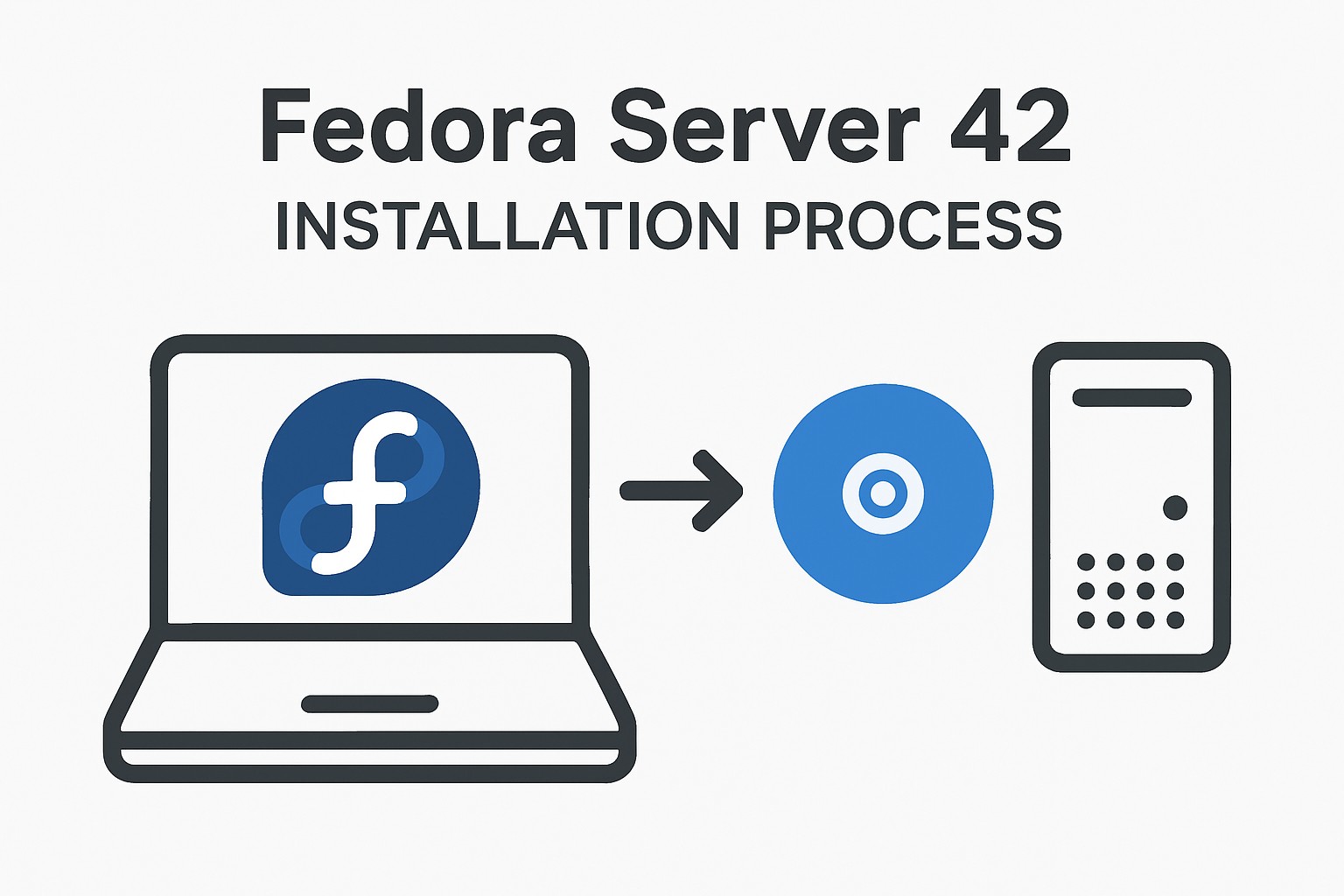Fedora Server 42 is a robust, secure, and modern Linux operating system tailored for server environments. This guide will walk you through every step of the installation process—from preparing your hardware or virtual machine, to basic post-installation configuration—ensuring your Fedora Server is ready for production or development use.
1. Preparing for Installation
Hardware Requirements
- CPU: Modern 64-bit processor (x86_64 architecture)
- RAM: Minimum 2 GB, recommended 4 GB or more for typical server setups
- Storage: Minimum 20 GB free disk space, ideally using SSD for better performance
- Network: Wired Ethernet recommended for reliable connectivity
Preparation Checklist
- Download the official Fedora Server 42 ISO image from Fedora’s website.
- Verify the integrity of the downloaded image using provided checksums (SHA256).
- Prepare installation media:
- For physical machines: Use software like Rufus (Windows) or dd (Linux/Mac) to write the ISO to a USB drive.
- For virtual environments: Mount the ISO as a virtual optical disk.
2. Booting and Beginning the Installer
- Insert the bootable USB stick or mount the ISO in your virtual machine.
- Power on the system and enter the BIOS/UEFI settings to ensure your device boots from the installation media.
- Select «Install Fedora Server 42» from the boot menu.
3. Installer Walkthrough (Anaconda Installer)
Language and Keyboard Layout
- Choose your preferred language and keyboard layout for the installation process and system default.
Installation Destination
- Select the drive where Fedora will be installed.
- Choose automatic partitioning for simplicity, or custom partitioning if you have specific requirements (e.g., separate /home partition, LVM, RAID configuration).
- Make sure to leave space for swap (at least equal to your RAM for systems with less than 8GB, or half RAM for larger systems).
Networking
- Verify your network connection is active. The installer typically auto-configures wired networks using DHCP.
- Optionally, configure a static IP address for servers that require fixed network settings.
User Settings
- Set a strong root password.
- Create an administrative user. Assign this user to the wheel group to allow sudo access.
Time and Date
- Select your timezone.
- Enable Network Time Protocol (NTP) to keep your server’s clock synchronized.
4. Customizing Installation and Add-ons
- You can select optional packages or server roles during installation, such as file server, web server, virtual machine host, etc.
- Minimal installations are recommended for security; additional services can be installed post-setup using
dnf.
5. Completing Installation
- Review your configuration summary.
- Click «Begin Installation».
- Installation will proceed; the process typically takes several minutes depending on your hardware.
- Once finished, reboot your system.
6. First Boot and Basic Configuration
Remove Installation Media during first reboot to avoid re-entering the installer.
Initial Login
- Log in as your administrative user or root.
System Updates
sudo dnf update -y
Updating after installation ensures your system receives the latest security patches and bug fixes.
Enabling Essential Services
- Enable and start critical services as needed, e.g. SSH:
sudo systemctl enable --now sshd
Firewall and Security
- Fedora uses firewalld by default. Configure it according to your needs:
sudo firewall-cmd --add-service=ssh --permanent
sudo firewall-cmd --reload
- Consider hardening SSH configuration (change default port, disable root login, use key authentication).
7. Best Practices and Next Steps
- Create and manage additional users as needed.
- Set up automatic system updates for security:
sudo dnf install dnf-automatic
sudo systemctl enable --now dnf-automatic.timer
- Set a hostname to identify your server:
sudo hostnamectl set-hostname your-server-name
- Install additional services (e.g., web server, database) via
dnf, as required for your environment.
8. Troubleshooting Tips
- If installation fails to detect your disk, check BIOS/UEFI mode (UEFI recommended), and storage configuration (SATA/AHCI).
- For network issues, ensure drivers for your network interface are supported.
- Use Fedora’s community forums and documentation for specific errors.
Fedora Server 42 installation is streamlined and secure, suitable for a wide range of server-use scenarios—from personal projects to enterprise-grade deployments. Adjust the guide according to your specific infrastructure, security, and automation needs.
